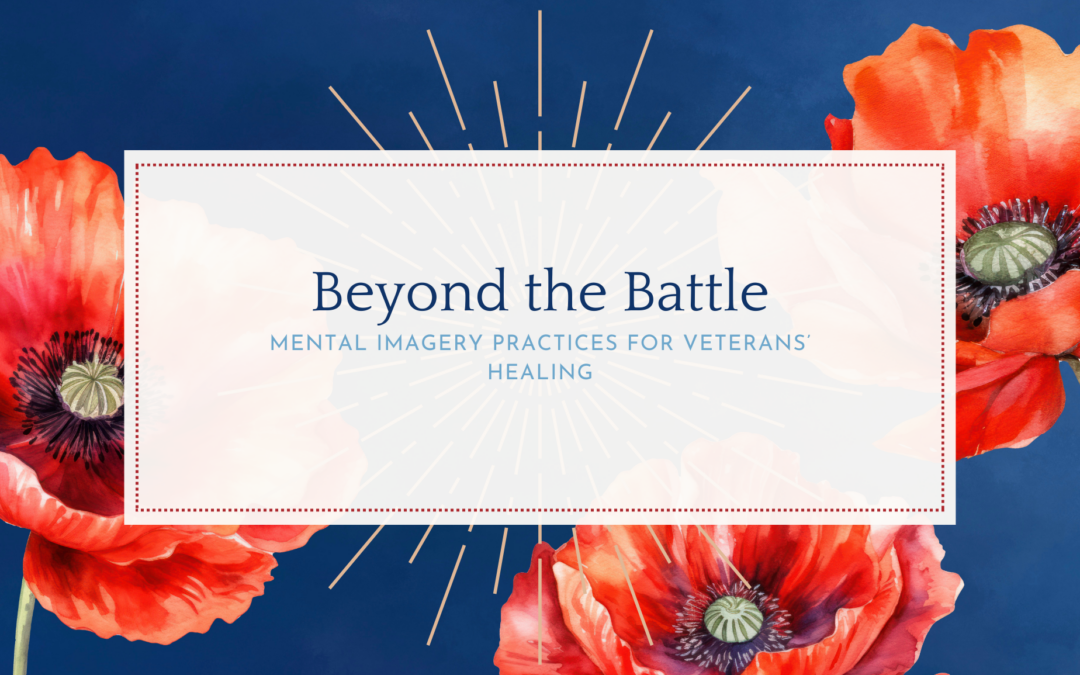Having long worked in the field of mental imagery, I’ve witnessed firsthand what a powerful and efficient tool for healing mental imagery can be not only for physical ailments and pain syndromes but for war trauma as well.
As warriors, soldiers and veterans have been conditioned through their training and experiences to live in a constant state of hypervigilance, ready to respond to the slightest stimuli in a world of potential danger. At home, these once useful traits no longer serve their intended purpose and can be recalibrated to live in a world of peace.
Using our most powerful “weapon” — our minds — veterans can condition themselves to be less reactive, slow down, and feel comfortable returning to a state of peace with their loved ones. Mental imagery is the power of our mind “to think” in pictures. We do this constantly, but we rarely turn our attention to it, as we have been trained to focus on words. Unlike words, Images bypass our habitual thinking patterns and conditioning. They are the communication system between mind and body, giving us a new internal education on how to respond to the world in ways we aren’t used to.
Here is an exercise called the Room of Silence, intended to reduce anxiety and sensitivity to loud noises, that I’ve found to be especially helpful for active duty soldiers and veterans:
The Room of Silence Exercise
Remember, because our mind and body are connected, even simply breathing with slow exhalations and brief inhalations will reduce anxiety.
Intention: To stop or quell anxieties
Duration: About 15 seconds
Close your eyes and breathe out three times slowly, counting down from three to one. Imagine yourself in a room together with the feeling of anxiety.Turn your back on the anxiety and find the door to the right out of that room to go into another room. If there is noise/cacophony go through that door to your right, eventually coming to a room of silence where the noise has stopped.
When you come to that room of silence, look around and see what you discover there. You may have to go through door after door after door in each room until eventually you come to the room of silence and when you do, the anxiety is gone. See what you discover in that room. And when you are ready breathe out and open your eyes.
Why This Works
The next time that the anxiety comes, you may not have to go through all the rooms before reaching the room of silence. Simply recalling what was in the room of silence may be enough to stop the anxiety because it will remind you of a time that you were able to shed the anxiety and leave it behind. The memory is both powerful and pleasant and can stop the anxiety state almost instantly.
One Veteran’s Experience During This Imagery Exercise
A young man imagined himself going through various rooms until he found the room of silence, and discovered there a picture of a shepherd with lambs on the wall. He was asked to go into that picture and become the shepherd. He led the lambs into a meadow, where he saw a valley into which he descended, and there he felt much calmer and more peaceful. He found a person who was very kind to him and with whom he could discuss the anxiety in a clear, free, and open way.
You can find many more imagery exercises for veterans’ physical and emotional ailments in my co-authored book with Dr. Phyllis Kahaney: Reversing the Trauma of War: PTSD Help for Veterans, Active Duty Personnel, and Their Families.


